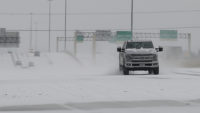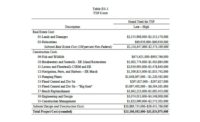On the final day of the legislative session, May 31, Texas lawmakers completed the final version of Senate Bill 3, which aims to bolster the state’s electricity infrastructure and require power plants to prepare for extreme weather conditions in response to the outages that resulted during the deadly February winter storms. The bill, sent to Gov. Greg Abbott’s desk June 1, requires electric generation providers to winterize both their infrastructure and operations or pay fines of up to $1 million a day for each offense.
Abbott signed the legislation June 8 and it went into effect immediately.
All power generators selling to the Texas market will be required to follow weather emergency preparedness standards to be determined by the Public Utility Commission (PUC). Meanwhile, those natural gas facilities considered critical to keeping power generators online will also fall under the requirements. The bill indicates that the state’s oil and gas regulatory agency, the Texas Railroad Commission (TRC), will determine the winterization standards for those natural gas facilities that qualify.
“We have been following the legislation closely and look forward to working with the Public Utility Commission on the implementation,” says Leslie Sopko, communications manager with the Electric Reliability Council of Texas (ERCOT), which operates the state’s electrical grid. “These measures will help strengthen the Texas power grid and enhance our efforts to provide reliable electric service to Texans.”
The PUC will have six months to prepare weatherization rules for the power industry, and the TRC will do the same for the natural gas industry. Both agencies will perform onsite inspections to enforce these rules. Utilities will be given “a reasonable period of time” to fix any violations, but doesn’t appear to specify how much time will be given to comply with weatherization rules once completed by the PUC and TRC.
The legislation also establishes a statewide emergency alert system that will notify Texas residents of power outages.
Texas is currently Swinerton Renewable Energy’s largest market, with 2.8 gigawatts of utility-scale projects either built or under construction. The firm’s president George Hershman notes that “while there are costs associated with weatherizing existing and future facilities in Texas, they are pertinent to the prevention of future outage events like those inflicted by Winter Storm Uri and permissible when applied uniformly across the energy supply chain.”
Hershman, who wrote to the Texas Senate ahead of the previous session to voice support for SB 3, says, “Earlier versions of the bill targeting renewable energy assets would have undermined a stable market environment for investment by imposing significant and unnecessary costs on existing generation facilities, not associated with weatherization.”
With more than two-thirds approval from both the House and Senate, the bill will go into effect immediately after receiving the governor’s signature. SB 3 doesn’t include any specifics on how companies will pay for winterization upgrades. Another bill that proposed a $2-billion plan that would use the state’s rainy day fund to help power companies pay for winterization passed through the House in May, but was not approved by the Senate.






Post a comment to this article
Report Abusive Comment